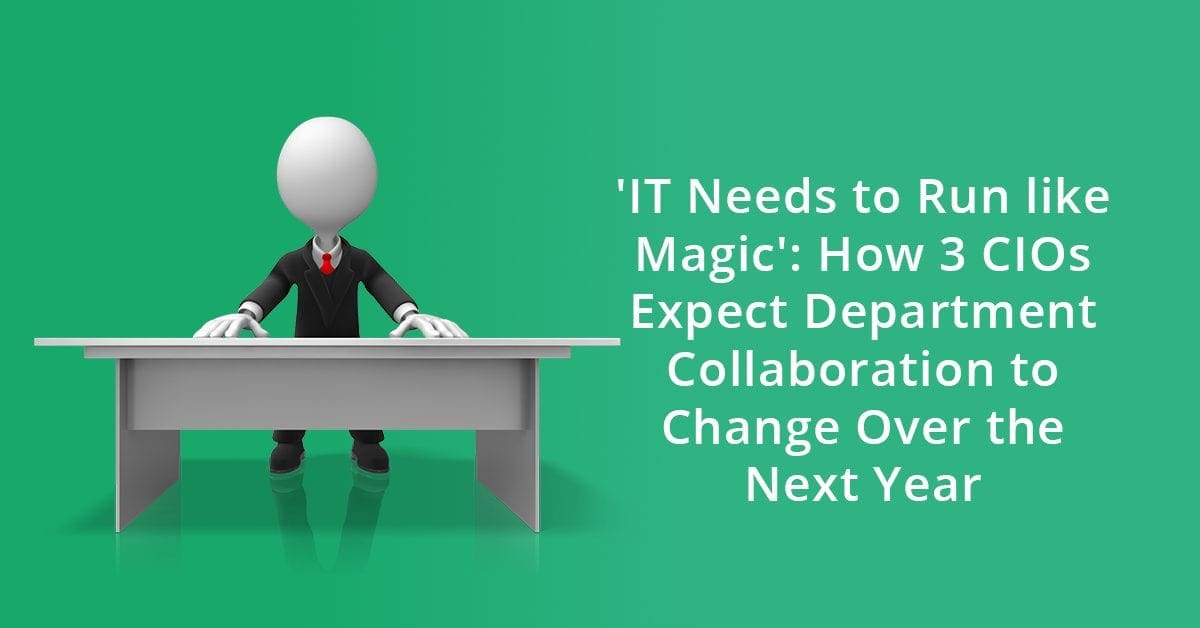Call us toll-free: 800-878-7828 — Monday - Friday — 8AM - 5PM EST

By Jackie Drees for Becker’s Hospital Review
Healthcare has entered a period of rapid innovation spurred by the COVID-19 pandemic, leaving functions such as IT department collaboration taking on new virtual approaches and increased responsibilities among other divisions and executives.
Here, three CIOs from hospitals and health systems across the country share their predictions for IT department collaboration and responsibilities in the year ahead.
Question: How do you anticipate IT department collaboration to evolve and what will it look like at this time next year?
Editor’s note: Responses have been lightly edited for clarity and length.
Evan Jackson, vice president and CIO at Middlesex Health (Middletown, Conn.): The pandemic has forced a dramatic shift to virtual tools and a greater structure to solicit – one I don’t see reversing even post pandemic. The shift to virtual, and the need for more overt and structured methods to solicit feedback and interaction with user areas – and between IT teams – is here to stay.
Raymond Lowe, senior vice president and CIO at AltaMed (Los Angeles): IT leaders need to be strategic business leaders, understand how to solve complex problems with systematic solutions and challenge their departments to adapt quickly to patient-centric care. There is a lot of technical debt that will require reconciliation for the right outcomes. IT has to enable cybersafe patient care delivery that supports the delivery of medicine with robust sensitivity and resiliency. IT needs to run like magic.
Scott Waters, CIO and CTO at Overlake Hospital Medical Center (Bellevue, Wash.): The importance of IT as not just a cost center or utility, but as a strategic enabler was made very clear during the pandemic. The IT departments of all health systems had to mobilize quickly to move individual employees, whole departments or locations to virtual settings in a matter of hours and days. The need to respond quickly and have the support from the organization to make adjustments along the way has paved the path to a more innovation friendly environment. Healthcare has historically been very risk adverse and slow to adopt new technologies. This has changed and we are now in a period of rapid innovation. It is an exciting time to be working in health IT. Many health systems are creating roles for digital transformation or innovation. I am seeing new roles being created or expanded roles in the C-suite to lead this. My role has been expanded to address this in partnership with our chief strategy officer.
Looking into next year, I anticipate a deep partnership between IT and strategy to be in place across all organizations with a dual focus on internal innovation strategies among employees and providers and external innovation strategies among patients and community.
